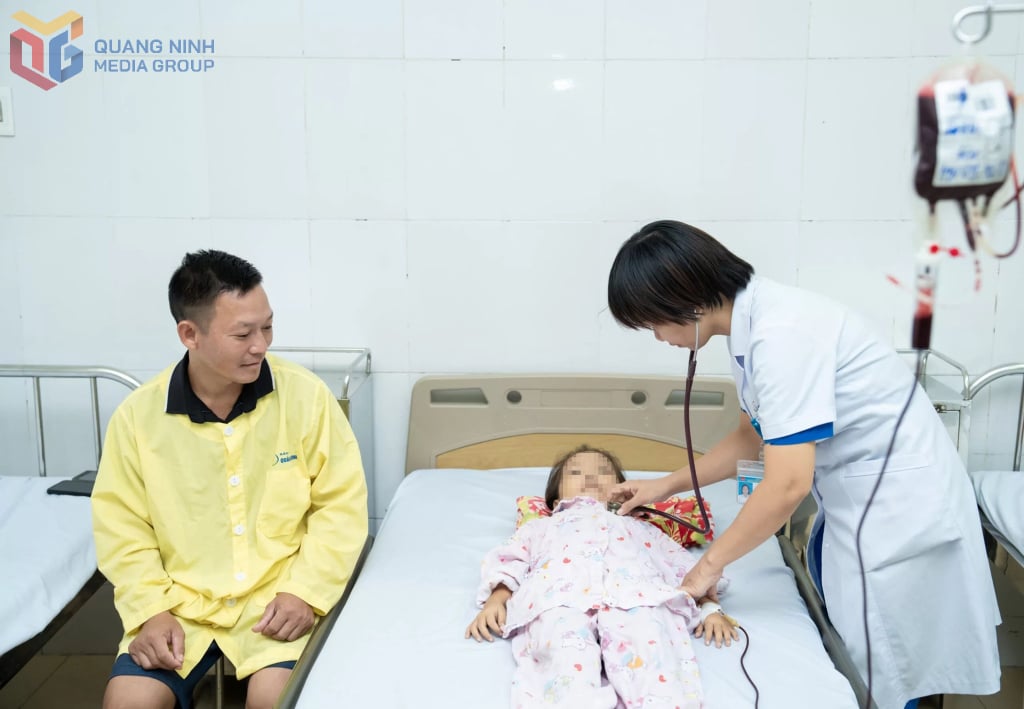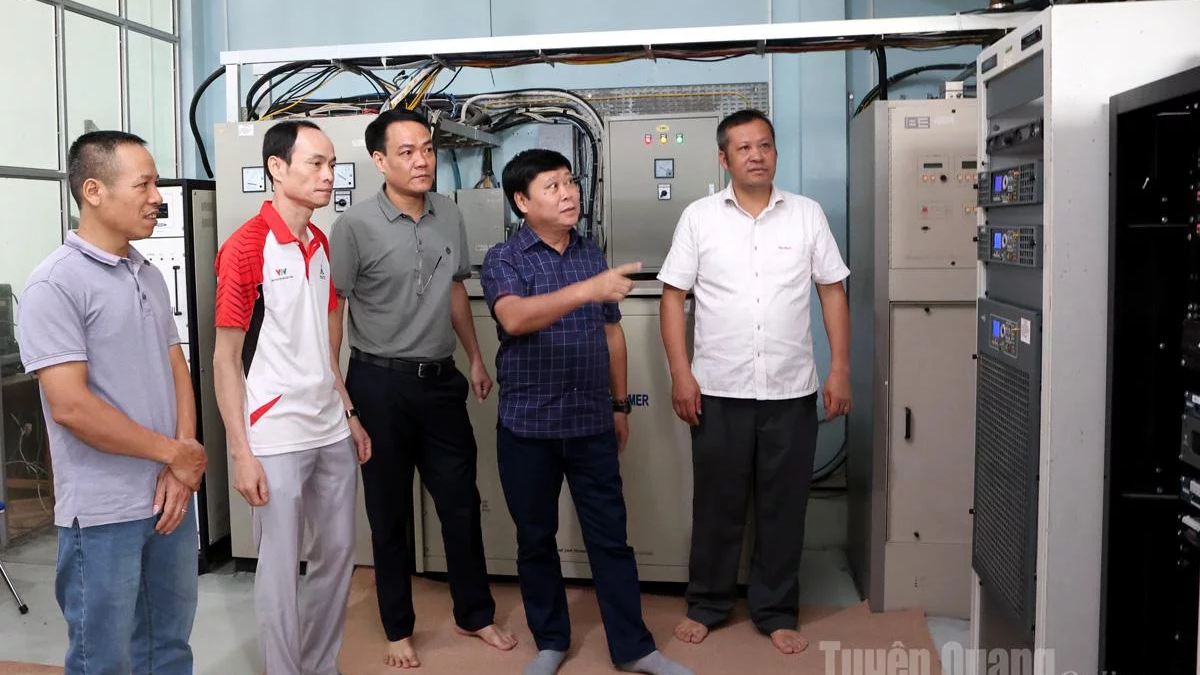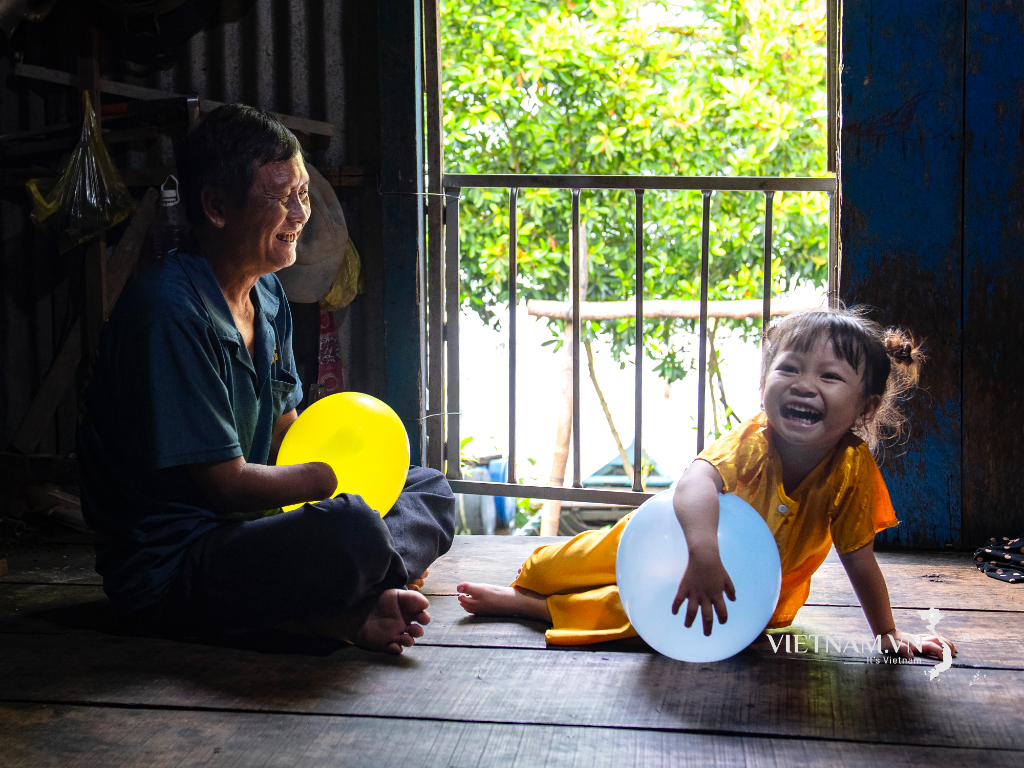is one of the most common genetic hematological diseases in the world , as well as in Vietnam. People with the disease must live with chronic anemia, lifelong blood transfusions. The disease can cause serious complications, long-term effects on health and life.

In Vietnam, the rate of people carrying the Thalassemia gene is quite high, reaching more than 13 million people. In Quang Ninh alone, there are currently more than 200 patients with Thalassemia, nearly half of whom are children under 15 years old.
With the determination to improve the quality of population and maternal and child health care, Quang Ninh Obstetrics and Pediatrics Hospital has proactively invested in human resources, applied many modern techniques in diagnosing and treating Thalassemia. Up to now, the hospital has mastered important techniques in diagnosing Thalassemia such as blood count test, iron and ferritin quantification, hemoglobin electrophoresis, Thalassemia gene diagnostic test, amniocentesis for prenatal diagnosis of Thalassemia.
Since 2018, Quang Ninh Obstetrics and Pediatrics Hospital has begun implementing pre-implantation genetic screening techniques for embryos. With this technique, couples who have been identified as carrying the Thalassemia gene and want to have healthy, disease-free children can undergo in vitro fertilization (IVF) and pre-implantation genetic screening for embryos with the aim of selecting embryos that do not carry the disease gene to transfer into the uterus. This is considered a breakthrough in the prevention of Thalassemia, while also making an important contribution to improving population quality.
In addition to pre-implantation genetic screening techniques, Quang Ninh Obstetrics and Pediatrics Hospital also effectively performs Thalassemia treatment methods, such as: Blood transfusion treatment, iron chelation treatment, splenectomy to treat hemolytic anemia for patients with severe cases.

In order to improve the treatment capacity for patients with Thalassemia, the provincial health sector has expanded international medical cooperation, notably the cooperation program between the Quang Ninh Department of Health (Vietnam) and the Health Committee of the Guangxi Zhuang Autonomous Region (China). Through this, the provincial health sector has assigned the Quang Ninh Obstetrics and Pediatrics Hospital to participate in professional exchanges, send staff for training, and receive advanced techniques from major hospitals in Guangxi. The two sides regularly organize seminars and in-depth discussions on the treatment of Thalassemia and diseases related to mothers and children.
Aiming for a long-term goal, Quang Ninh hopes to soon deploy stem cell transplantation technology in the treatment of Thalassemia. This is a modern method that can help patients recover completely if treated early, especially young children.
Although it is a dangerous disease, Thalassemia can be effectively prevented if screened and detected early, thereby reducing the burden on society, improving the quality of life and the quality of the race. In recent times, in addition to treatment, medical facilities in the province have also promoted disease prevention activities, such as counseling and health check-ups before marriage; screening, diagnosis, and early treatment of prenatal and neonatal diseases. Doctors also actively promote the causes, consequences of the disease and preventive measures. Thorough counseling for couples carrying the disease gene during pregnancy is an important step to limit the birth of children with the disease. Early detection and timely counseling help limit the birth of children with the disease, reducing the medical and social burden.
In fact, babies with the Thalassemia gene look normal at birth. Later, signs of anemia, slow growth, enlarged liver and spleen, recurrent infections, etc. will appear. If left untreated, children may suffer from malnutrition, bone deformities, slow physical development, and difficulty living to adulthood.
Therefore, people need to be proactive in screening. When there are signs such as fatigue, pale skin, dark urine, enlarged liver and spleen or someone in the family has the disease, they need to go to a medical facility for examination and Thalassemia screening test. It should be noted that people with mild disease genes often do not have obvious symptoms and are easily overlooked.
Source: https://baoquangninh.vn/tang-cuong-hop-tac-y-te-quoc-te-trong-dieu-tri-benh-tan-mau-bam-sinh-3365898.html

























![[Photo] Gia Lai provincial leaders offer flowers at Uncle Ho's Monument with the ethnic groups of the Central Highlands](https://vphoto.vietnam.vn/thumb/1200x675/vietnam/resource/IMAGE/2025/7/9/196438801da24b3cb6158d0501984818)









































































Comment (0)